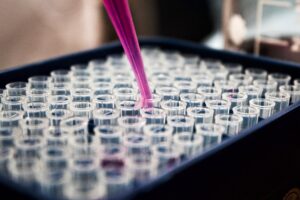Multi-channel extracellular neuronal recording provides a window into the synaptic inputs and action potential outputs of multi-neuronal (N= 10’s, 100’s and recently 1000’s of neurons) circuits in a variety of cortical and deep brain  structures. These measurements can be carried out on a chronic basis in awake and behaving rodents and primates. The use of micron-scale, lithographically-defined semiconductor electrode “probes” (smaller than a human hair) allows a large number of precisely-controlled electrodes to target neurons throughout an entire region of tissue with a minimum of tissue damage. The proper analysis of low frequency field potentials allows the measurement of synaptic inputs to target neurons, while the separation of cell spiking activity into single unit action potentials allows one to gain precise spike timing ”output” information from an entire cohort of neurons. The techniques of optogenetics allow the selective stimulation of local circuits with simultaneous recording, while chemosensing electrodes under development will allow simultaneous measurement of local neurotransmitter concentration or drug concentration with electrical activity.
structures. These measurements can be carried out on a chronic basis in awake and behaving rodents and primates. The use of micron-scale, lithographically-defined semiconductor electrode “probes” (smaller than a human hair) allows a large number of precisely-controlled electrodes to target neurons throughout an entire region of tissue with a minimum of tissue damage. The proper analysis of low frequency field potentials allows the measurement of synaptic inputs to target neurons, while the separation of cell spiking activity into single unit action potentials allows one to gain precise spike timing ”output” information from an entire cohort of neurons. The techniques of optogenetics allow the selective stimulation of local circuits with simultaneous recording, while chemosensing electrodes under development will allow simultaneous measurement of local neurotransmitter concentration or drug concentration with electrical activity.
Semiconductor neural probe technology was initially developed at Stanford and the University of Michigan in the 1980’s, and has steadily gained technical maturity and acceptance in the scientific community, with several commercial systems available and in use. In 2017 alone, more than 30,000 journal papers cited “neural probe” as subject or method. Given the relatively large amount of high impact science being carried out with this technology, one might expect to see uptake among pharmaceutical companies– at least for the development of drugs intended to address disorders with a putative circuit-level origin or impact. Yet, uptake by pharma has been slow or non-existent. Why?
Diagnostic Biochips (DBC) is committed to ruggedizing and simplifying multichannel recording, in order to make it a widely accessible and accepted technique for circuit level neurophysiology. As part of that effort, we believe that a well-validated and understood assay for multichannel recording has the potential to impact drug development. Accordingly, we are soliciting feedback from researchers in the CNS drug discovery and development space who are willing to consider how this technology might be useful to pharma, and what requirements to entry we face.
Bio:
Brian Jamieson earned a PhD and MS in Biomedical Engineering and Electrical Engineering, respectively, from the University of Michigan and a BS in Physics from Yale. His doctoral dissertation focused on practical aspects of chronic, high channel count, high-density silicon probe recordings in awake and behaving rats. From 2002-2006 he was a Group Leader at NASA’s Goddard Space Flight, where he worked on miniaturized analytical instrumentation such as mass spectrometry. Brian is a co-founder of Diagnostic Biochips, founded in 2011 to serve neuroscience and medical markets.
